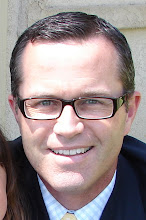Saturday, March 28, 2009
"It is unimaginably hard to do this..."
http://online.wsj.com/article/SB122178211966454607.html
I must stay present - in this very moment - to be fully alive.
Friday, March 27, 2009
Distributed Leadership
Leadership is the responsibility of every employee. We cannot afford non-leaders at any level in the company. We, therefore, are not given our ability to lead from our bosses. The opportunity to lead is a right given when we are hired. The authority to lead is granted by those we hope might follow.
Distributed Leadership does not mean that every person gets to make all the decisions that they want to make in the company. It does mean that they have the responsibility to speak freely, to be informed, to challenge, to learn, to invest creative ideas and to fully participate in the process of creating the future. It means that all leaders have an obligation to create an environment where these behaviors are not only possible but an environment where these actions are encouraged and supported.
People who have successfully created a culture where leadership and learning are distributed tend to share a common set of beliefs:
Ordinary people can do extraordinary things.
Under the right conditions people seek responsibility for making a difference.
People would rather excel than be average.
Remarkable people want to work around other remarkable people.
People need to find meaning in their work.
People want their work to matter.
People will contribute more if they are truly satisfied by their work.
People will be more satisfied by their work if they are clear about how to contribute and are able to do so in ways that are meaningful to them.
Leaders have a moral responsibility to create an environment where people can grow toward their potential while making a difference for the organization.
It matters how you play the game: the end does not justify the means.
People want to be held accountable for their contribution.
People prefer positive and hopeful rather than negative and pessimistic.
Trust must be given before it is earned.
People want to get better.
People don’t resist change; they resist being changed.
The way people think is often more important then the tools they use.
People will act as leaders the way they were led as followers.
What you tolerate you teach.
I'd love to hear your additions and your comments and I'd especially love to know that you passed this along to inspire others to make it real in their organizations.
Thursday, March 26, 2009
Self-inspired
Dear David,
I’ve always believed in you and I’ve always known that the special combination of qualities, talents, skills and attributes that have come together to form your personality would sustain you in leading a vibrant, meaningful and exciting life.
Why did you stop taking risks? What are you so afraid of?
Where’s the high school kid who talked his way into meeting Kissinger and owned the stage? Where’s the boldness - the sheer force of personality that changes the energy of a room, draws people to you, creates opportunity and brings you joy? I challenge you to reclaim that. I challenge you to lead the second half of your life – starting now – to deliver what is most essentially you: strength of character, passion for aesthetic beauty, and absolute belief that you can and should associate with the best and brightest minds of your generation.
Stop second-guessing yourself. Knock off this shit about measuring up, comparing, critiquing. Reclaim the 16-year-old and choose that you are going to apply all of that positive confidence and deliberate living in a new and more powerful way. Think about it: with all that you’ve learned - all of your experience, reading and maturity – if you combine that with the risk-taking, possibility-craving attitude of that young man you will be an unstoppable, irresistible force.
Somewhere along the way you started to play it safe, to stay clean. You got too serious and you dampened the purity of you. I implore you, I challenge you, to lighten up, get dirty and take some risks – model a life lived in exultation and expectation.
I am proud of you.
I want to be inspired by you.
